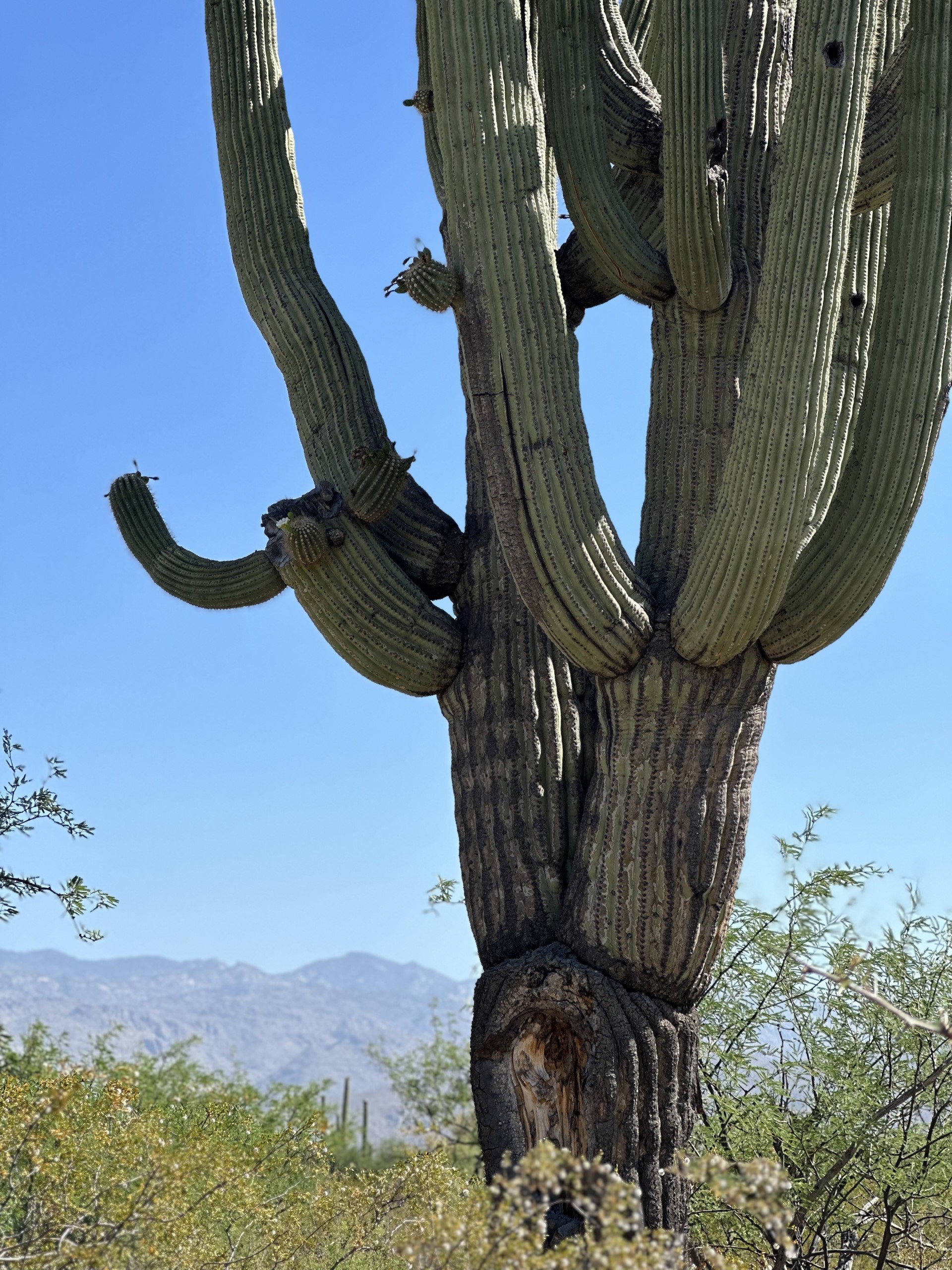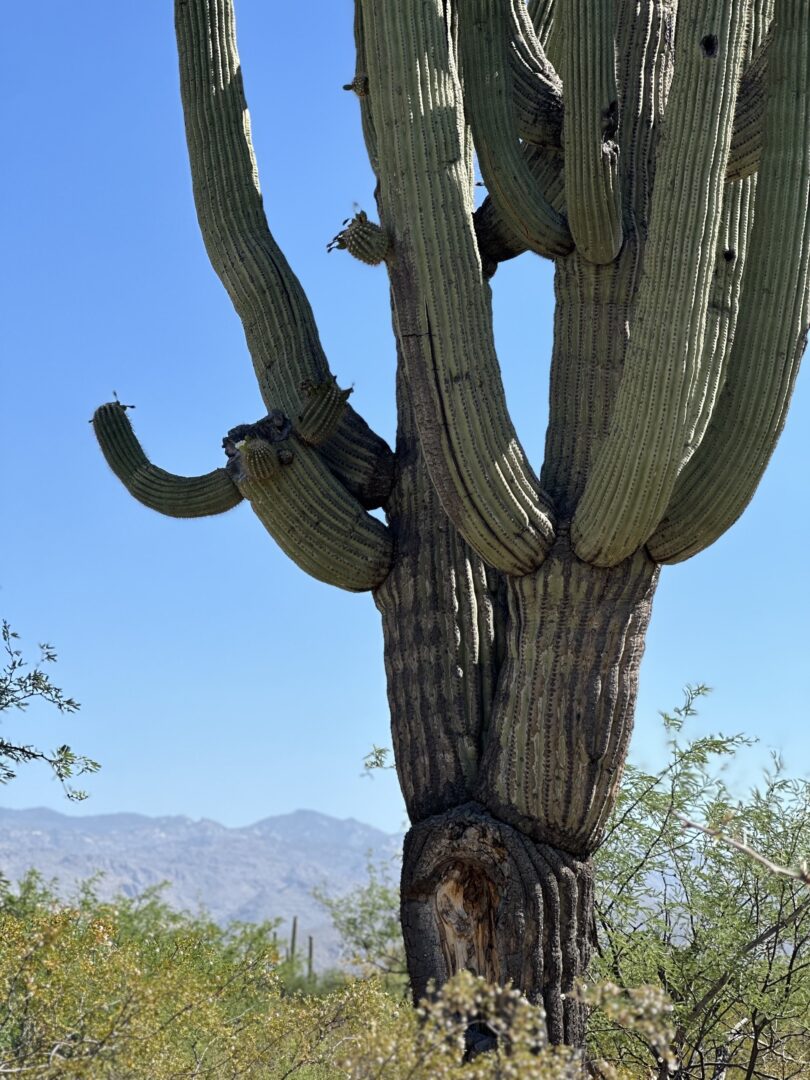
Saguaro National Park
On October 14, 1994, Saguaro was redesignated a National Park from a National Monument. This Arizona park covers elevation ranges from desert floor to mountain top, up to 2600 m (8600 ft). The park’s lowest elevation is a desert ecozone with chaparral and grassland biomes. The Tuscon and Rincon Mountains add their temperate, mixed forest biomes. A park that serves up prickly pear cacti to pine trees, bees, badgers, and bobcats.
On the desert floor, animals have acquired tolerances to high temperatures and water scarcity. The plants have not only adapted, they support most of the animal life.

The park is named for the Saguaro / sa-war-o / cactus. The giant Saguaro cacti are found exclusively in the Sonoran Desert, a stretch of land 311,000 km2 (120,000 mi2 ) that runs roughly from southeastern California to western Arizona and takes its name from western Sonora, Mexico. These plants can grow with or without branches, or arms. But not quickly – about 2.5 cm (1 in) or less a year. No surprise it is susceptible to death by grazing, trampling, drought, and freezing. Once grown, however, the majestic Saguaro cactus can stand 12 -18 m (40 to 60 ft) tall and live a long life well over 100 years.
Internally, the plant is supported with woody spines that hold the outer skin and can store and hold the weight of tens of gallons of water absorbed from shallow, wide-ranging roots. It provides nesting sites for cactus wrens and elf owls, high points for prey-seeking hawks, and water sources for Gila woodpeckers. What the animals don’t drink, the cactus can slowly consume for itself.
Saguaro National Park monitors these plants, unique to the Sonoran Desert, conserving them in their natural desert-to-mountain context for present and future generations.
B Bondar / Real World Content Advantage